Commentaries /
May 2023 LFS: Canada’s labour market is still defying expectations, but gearing down to part-time work
May 2023 LFS: Canada’s labour market is still defying expectations, but gearing down to part-time work
Canada’s labour market continued to outperform expectations in April with an increase of 41,000 jobs.



Rewa

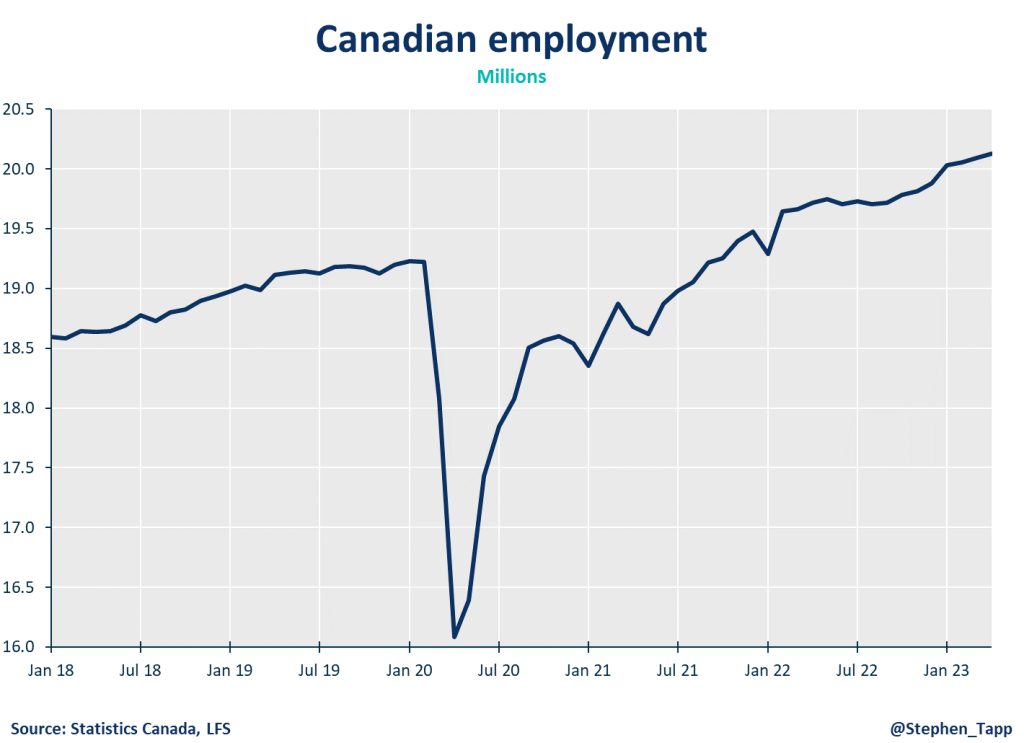
Canada’s labour market continued to outperform expectations in April with an increase of 41,000 jobs. However, the gains came exclusively from part-time employment, a sign that the full-time hiring binge may not be over. The labour market remains quite tight. The unemployment rate is 5%, near its generation low. Wages are growing at 5.2% year-over-year, at a healthy pace and running above the current inflation, something that will have the Bank of Canada watching closely.
KEY TAKEAWAYS
- Canadian employment rose by 41,000 jobs in April, once again exceeding market expectations (20,000), however all the growth came from part-time positions.
- Hours worked rose by 0.2%. The LFS reference week occurred prior to the federal public servant strike, so there is still some downside risk to GDP in April.
- The unemployment rate held steady at 5.0% for the fifth consecutive month, and remains near generational lows achieved last summer.
- Job gains were concentrated in part-time jobs (+48k, 1.3%), for the first noticeable gain since October. Full-time employment was essentially unchanged on the month.
- By sector, job gains were led by wholesale and retail trade (+24k) and transportation and warehousing (+17k). Employment was down in business services (-14k) and finance (-9k).
- In this tight labour market, average hourly wage growth remained strong at 5.2% year-over-year, and is now running faster than consumer price inflation (4.3% in March).
- Employment in April rose in Ontario (+33k; +0.4%) and Prince Edward Island (+2.2k; +2.5%), but declined in Manitoba (-4.k; -0.6%). There was little change in the other provinces.
SUMMARY TABLES
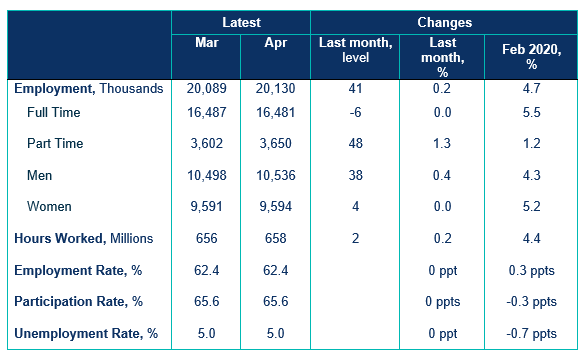
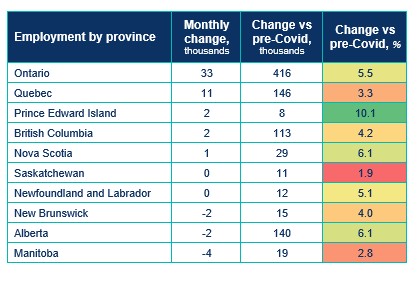
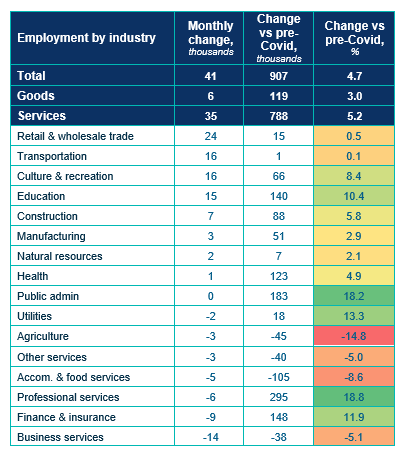
LABOUR CHARTS
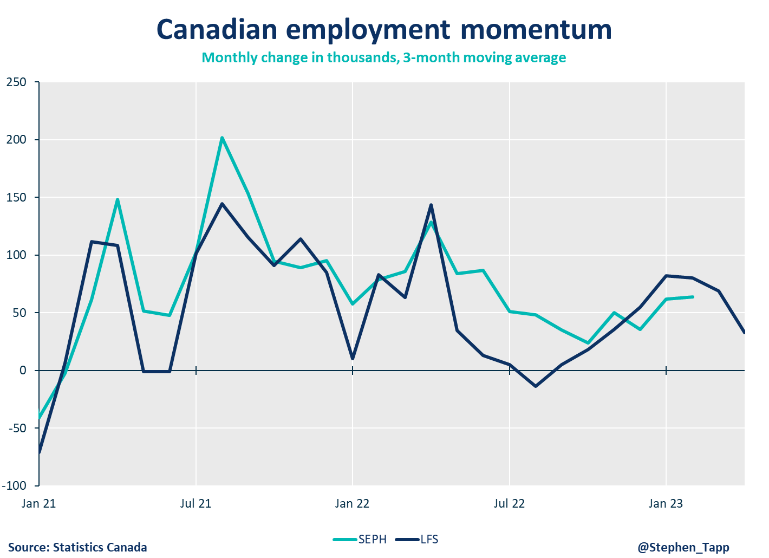

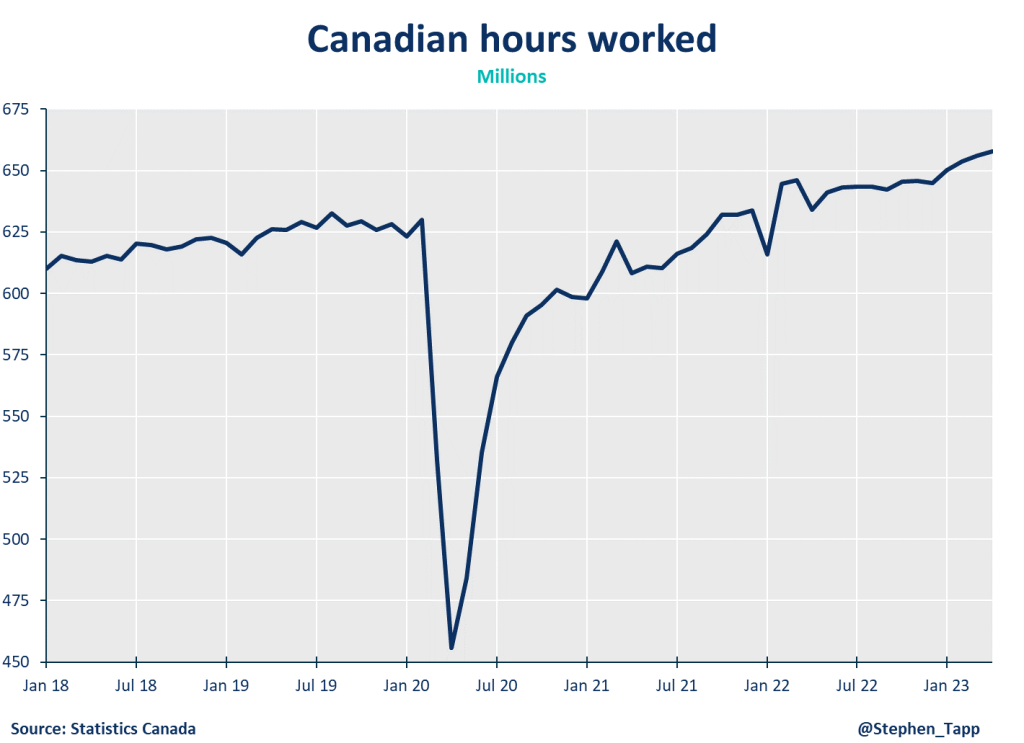
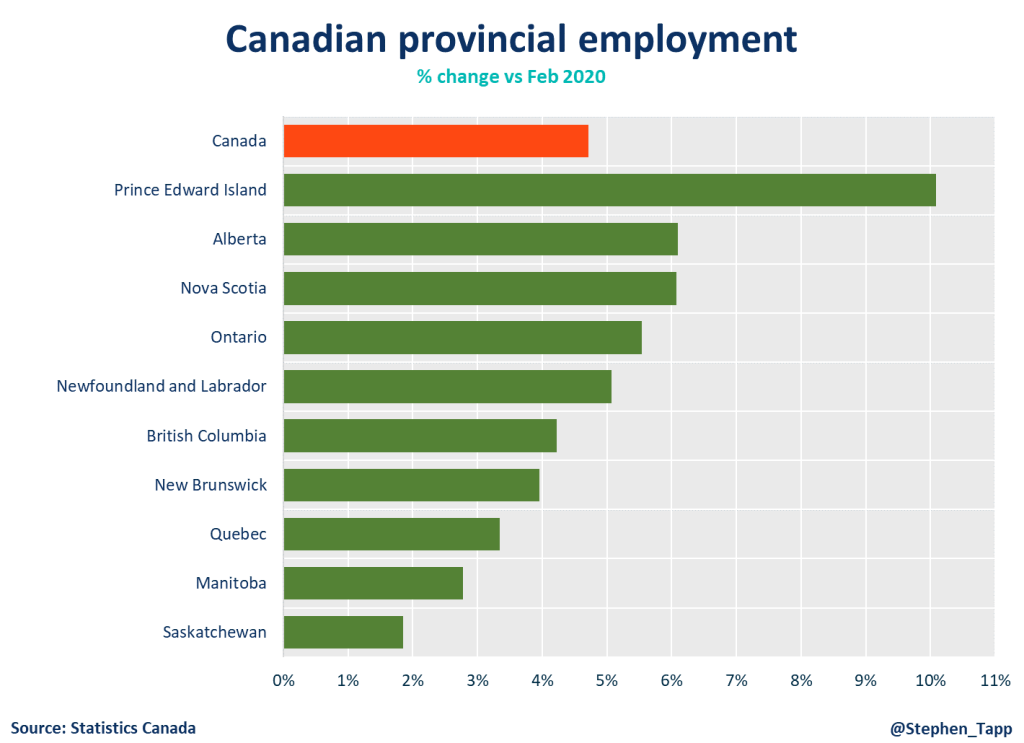
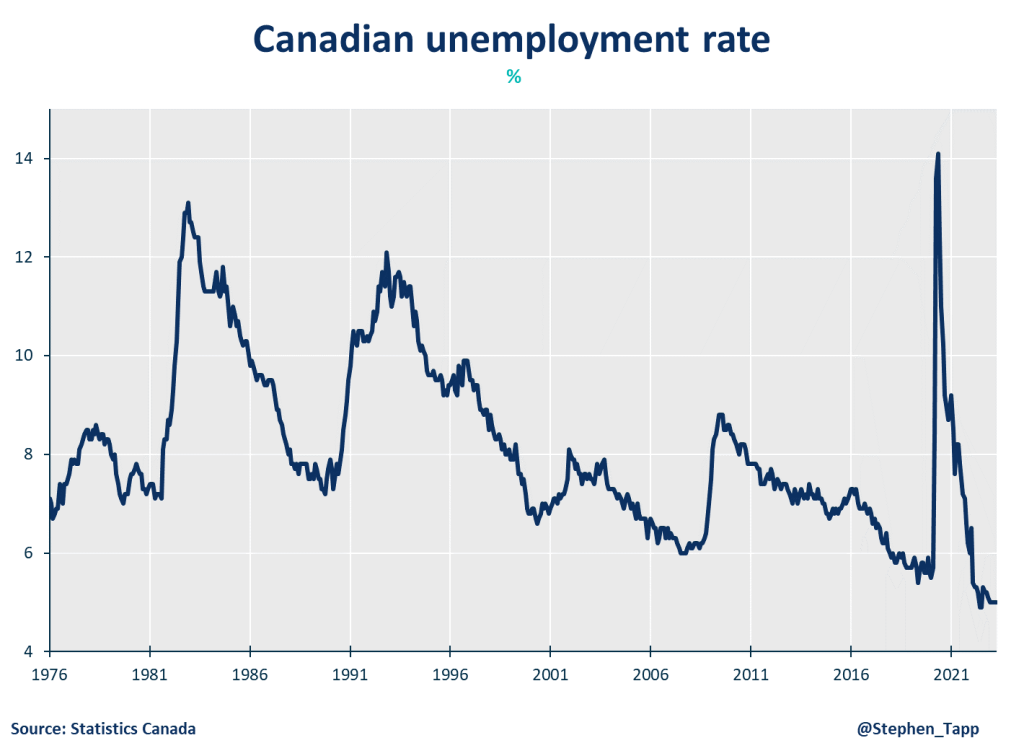
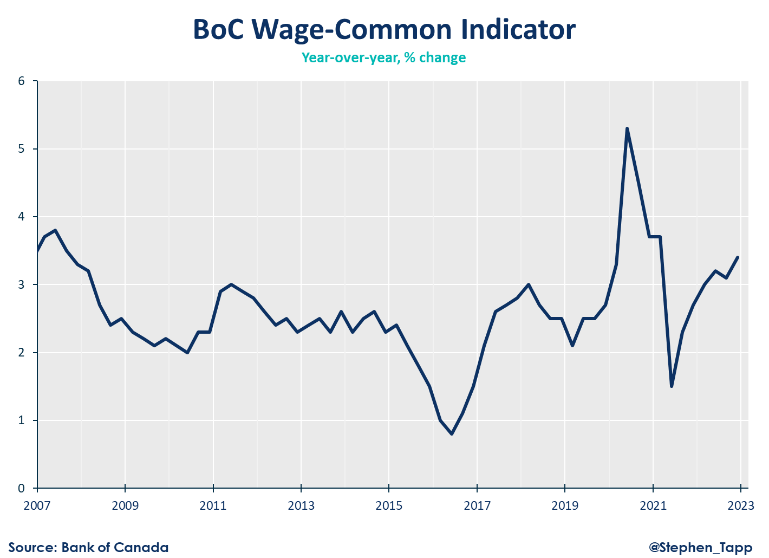
Other Commentaries

commentaries
Oct 19, 2022
September 2022 Consumer Price Index data: Food and services prices still rising, no progress on core inflation
Our Chief Economist, Stephen Tapp, looks at Canada’s headline inflation, which edged down for the third month in a row. There was no progress on “core” inflation, which held steady at 5%.

commentaries
Sep 20, 2022
August 2022 Consumer Price Index data: Finally some good news on Canadian inflation.
Stephen Tapp, our Chief Economist, looks at Canada’s headline inflation for August, which fell for the second straight month. Core inflation and services measures have also finally started to slow.

commentaries
Aug 16, 2022
July 2022 Consumer Price Index data: Canada’s inflation finally turns a corner with falling gas prices, but core pressures remain
Our Chief Economist, Stephen Tapp, looks at Canada’s headline inflation, which is finally showing signs of cooling off.